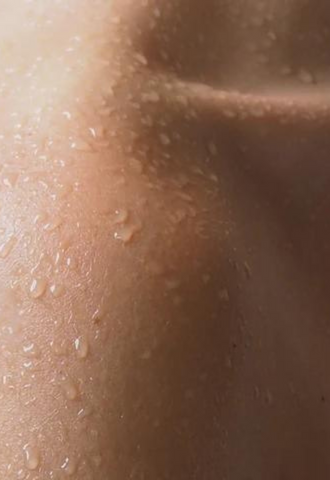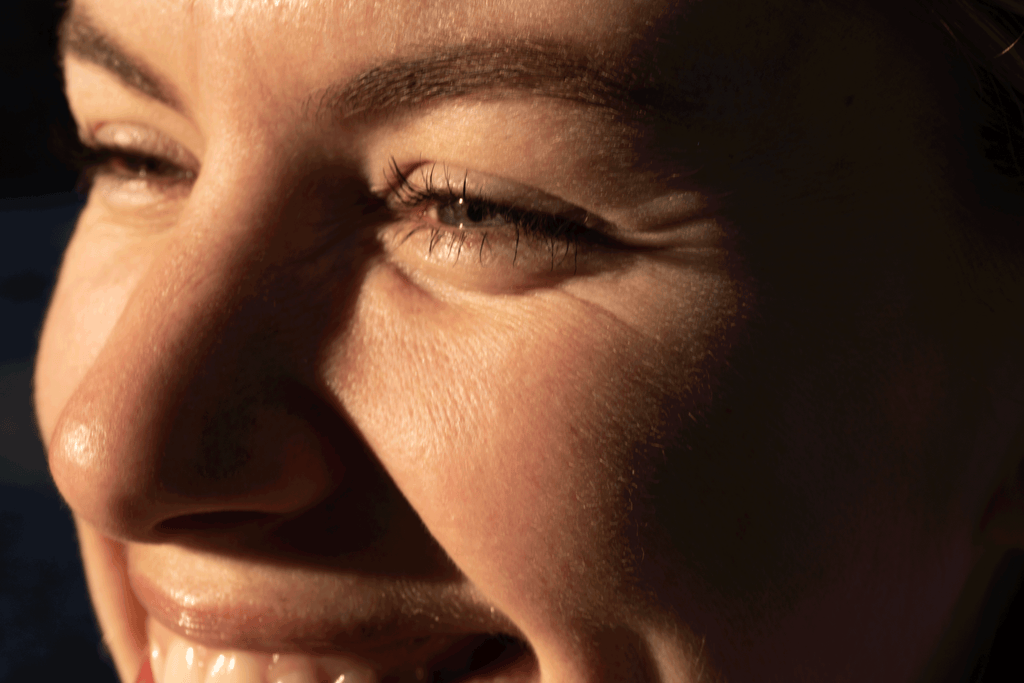Winter skin transition
Christina DüsterdichFeeling dry or having breakouts in the winter? Understand your complex winter skin with a few cold facts explained by our skincare expert Christina Düsterdich.
Winter skin may seem complex, but thankfully, the reason is often straightforward, and the solutions simple. Read how to help your skin in the winter season.

The explanation
The skin is put to the test in the winter due to the constant shifting between high radiator heat inside, and the cold air and wind that ravage our skin outside.
These changes can cause the skin to react in many ways, often all at once: From becoming oilier, to extreme scaly dryness, to redness and irritation, and to more break-outs than usual. The feeling of creams and oils not absorbing into the skin properly is also a common reflection.
The skin has naturally occurring oils which form a protective barrier on the surface, making it almost 100% waterproof. The wind, the cold and the low humidity we experience in the Nordic countries in the winter can weaken the effect of the barrier, allowing moisture to evaporate from the skin – leaving it dehydrated, dry and susceptible to frostnip.

- Dry or sensitive skin is likely to become more fragile and to suffer from irritation, dryness and redness to a greater extent than usual.
- Combination/oily skin may, on the other hand, experience a worsening of breakouts because of the lack of protection. The skin will often overcompensate by producing extra oil causing an oily T-zone, build-up of sebum, dead skin cells and sweat, clogging the pores and causing blackheads, or pimples.
The solutions
Use softer, more gentle cleansers.
The choice of cleansing products in your routine is essential to how your skin looks and feels for the rest of the day. The skin can get dehydrated and is more likely to become irritated in extreme weather so it’s a good idea to strengthen the skin by changing from a foaming, deeply cleansing gel to a softer, gentle cleanser. You might like to try cleansing lotions, cleansing milks and cleansing balms, all of which contain more nourishing oils rather than astringents.

Avoid too warm and too much contact with water
Water can dry out the skin to a certain degree. Water contains minerals, including lime, which cause tap water to rise to an alkaline pH value, which is not ideal for the skin. Hot water in particular can have a dehydrating effect as it removes the skin’s protective oils from the surface and causes a feeling of tightness, which is especially noticeable immediately after showering or cleansing.
The most important thing for the skin’s health is the natural microbiome found on the skin’s mantle in the form of microscopic bacteria which have the job of protecting and keeping the skin healthy. Just as we have gut flora that needs good care, the skin has skin flora that needs our understanding and attention. Along with the skin’s natural oils, sweat, and bacteria, the skin flora is a fantastic barrier that protects against dehydration and the irritation and infection this causes.
If you feel dehydrated or dry -rebalance your skin by only cleansing with STAR micellar water in the morning.
The skin does not have the same cleansing-needs in the morning, making it the ideal time to cleanse without using water. If you shower in the morning, try to avoid the warm water on your face, and use HERO to stabilise the skin’s pH and barrier after showering.
[collection1]
Use face oil as protection, that goes for oily skin too
Face oils have a softening, moisturising and protective effect that helps make the skin more resistant to the multiple drying elements of winter. The precious oils preserve the skin’s natural barrier, prevent dehydration and protect the outer blood vessels. Face oil is great for the skin no matter what skin type you have, and oily skin can also benefit from the golden drops. Karmameju’s four face oils are tailored to each skin type, giving you exactly the type of oil and ingredients that suit your skin best. It often comes down to the correct dosage and just a few drops may be enough. By supplementing the skin’s lipid barrier with oil, the right face oil can help balance the skin, leaving it less oily or less dry as a result.
Curate your routine in layers like you do your wardrobe
Think of the serum as your hydrating cami, the face cream as your skin’s figure-hugging dress and the face oil as a warm winter coat.

Start your layers with the light, fast absorbing products; pH solution, face mist, face serum, face cream and eye cream, which are usually the ones that plump the skin with hydration and active ingredients. End with the more oil-rich products; face oil and balms to seal in the moisture, soften and protect against irritation and thread veins. If you can’t cope with the idea of all the steps in your skincare routine or if you feel that all the layers are too much for you, then a drop or two of oil in your face cream can also make a difference.

Goodbye dry winter cheeks: The ideal cold cream
In extreme weather, such as a cold headwind when you’re out on a run or you’re on a skiing holiday, we recommend all skin types to supplement your skincare with face oil and balms to prevent frostnip.
Karmameju’s CALM balm is the ideal barrier cream/cold cream/lipid balm to apply to children’s cheeks in the winter or after exposure to sun. CALM balm also works as a nourishing, regenerating and moisturizing night-mask when the skin is extra dry. CALM can be used as a natural, plant-based alternative to the K-beauty trend slugging skincare, in which you care for the skin with rich oils that seals the moisture in the skin.
The solution in short
- Switch from a cleansing gel to cleansing lotion or cleansing balm and use a konjac sponge with your cleanser to daily but gently exfoliate and stimulate the skin’s micro-circulation.
- Protect your skin by only cleansing with water in the evening. Use STAR micellar water in the morning, without water.
- Use HERO to stabilise the skin’s pH and barrier after contact with water.
- Avoid skin tonics and toners containing alcohol.
- Go for hydration boosters in serums and face creams.
- Use nourishing, soothing and moisturising face oils and balms.
Remember that a new routine takes time. You will not see a major change overnight or after a few days. It takes the skin 4–6 weeks to renew, and you will need to give the new steps in your skincare routine the same time to show an effect.
[collection2]



















